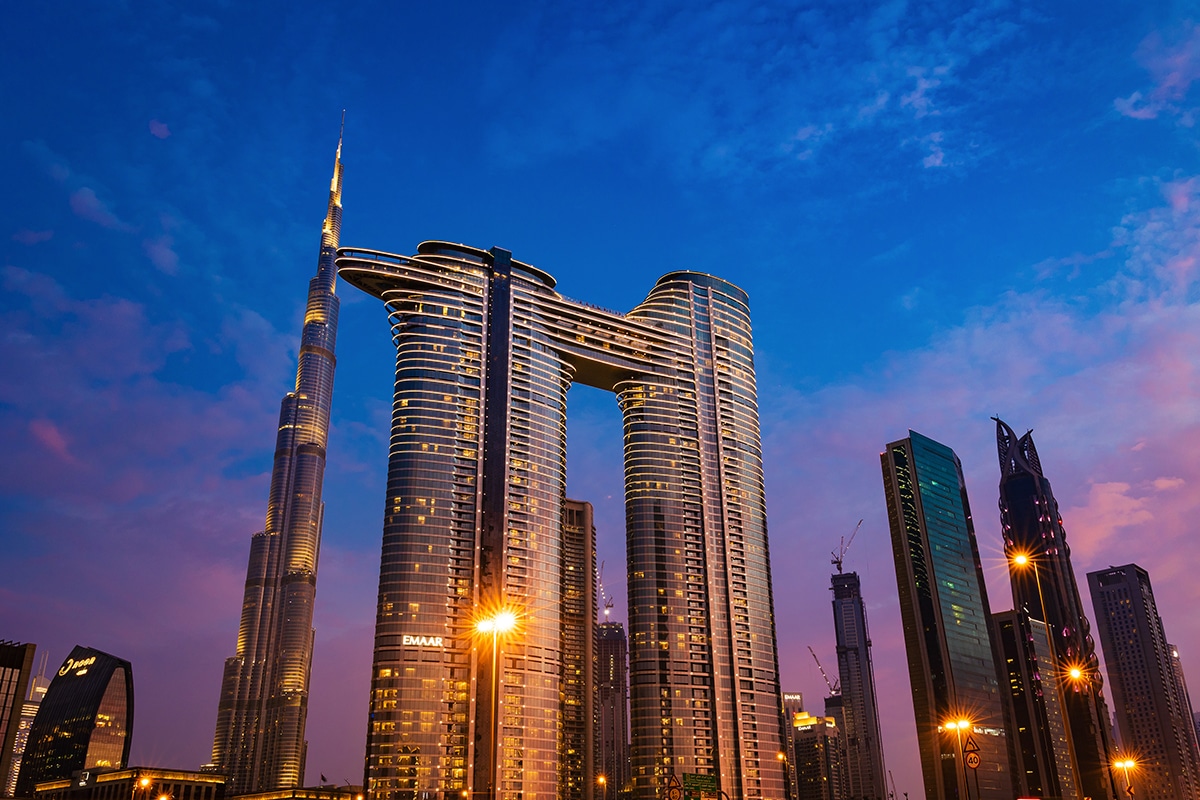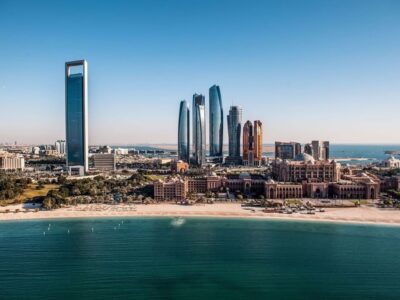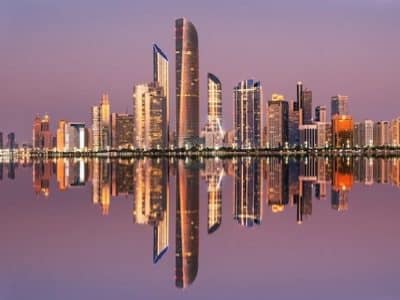The United Arab Emirates can expect a further influx in ultra-high net worth individuals relocations fuelled by tax benefits and new regulations, an expert told Arabian Business.
This trend, which experts say is likely to continue, is reshaping the region’s wealth management sector and driving significant infrastructure investments.
“The remarkable influx of UHNWIs from across the globe to the Middle East, and the United Arab Emirates in particular, has seen this community adapting to the UAE as their new home, reflecting strong confidence and a long-term commitment to be based out of the country,” said Tariq Nakhooda, Country Head, UAE at IQ-EQ, an investor services group.
This comes as around 128,000 millionaires are expected to migrate globally this year, up from just 57,000 a decade ago, and as the UAE continues to witness a significant surge in its millionaire population. The country is currently home to 116,500 millionaires, 308 centi-millionaires, and 20 billionaires.
Shifting from holiday homes to permanent bases
According to Nakhooda, there has been a major shift in how UHNWIs view the UAE.
“Previously, the trend has been for this community to choose some assets, typically real estate, to add to their portfolio – such as a holiday home destination,” he explained.
“This trend has transitioned into being based out of the country with increasing and significant local asset exposure, including business enterprises and building relationships with various in-market stakeholders such as private bankers and other service providers.”
This transition is supported by ongoing efforts to enhance the UAE’s attractiveness to wealthy individuals and families. Nakhooda cited “continued enhancements of local legislation to give high net worth families certainty on the stability of the regulatory and legal environment,” as a key factor driving this trend.
Infrastructure investments cater to growing UHNWI population
With the number of UHNWIs set to rise by 30 percent by 2028, according to Knight Frank’s 2024 Wealth Report, the region is adapting its infrastructure to accommodate this influx of wealth.

In 2023, the global population of UHNWIs grew significantly, with an average of about 70 new wealthy investors emerging daily. This resulted in a 4.2 percent increase from the previous year, bringing the total to over 626,600 UHNWIs worldwide. While North America led this growth (up 7.2 percent), the Middle East followed closely (up 6.2 percent).
“The GCC countries have historically invested heavily into infrastructure, and this has contributed to high standards of living – attracting the global wealthy,” Nakhooda said.
He pointed to ongoing investments in luxury real estate, high-end hotels, and transportation networks as evidence of the region’s commitment to catering to UHNWI expectations.
The real estate sector is already ramping up its offerings. Approximately 26,154 new homes are expected to hit the Dubai market this year, with another 32,667 units anticipated in 2025. Investors are increasingly targeting high-end real estate in prime locations such as Palm Jumeirah, Emirates Hills, and Jumeirah Bay Island. The city has registered record-breaking numbers of transactions and sales volumes this year, with further growth anticipated in the near future, particularly in light of expected population increases.
Regulatory adaptations and tax benefits
The UAE’s financial hubs are evolving to meet the needs of UHNWIs and family offices. Nakhooda highlighted recent regulatory changes, such as the Dubai International Financial Centre’s (DIFC) introduction of ‘Family Arrangements Regulations’ and the UAE’s new ‘Family Business Law’.
“These hubs are showcasing adaptability to the growing and changing needs of the market,” Nakhooda explained.
“The DIFC, for instance, recently introduced ‘Family Arrangements Regulations’, which allow family offices in the UAE to operate without registering with the Dubai Financial Services Authority (DFSA) as a ‘designated non-financial business or profession’.”
The tax landscape remains a significant draw for UHNWIs.

“In the UAE, there’s no personal income tax or capital gains tax. There’s also no inheritance tax,” Nakhooda said.
“This combination of tax benefits makes the country an attractive location for families seeking to preserve and grow their wealth across generations.”
Family office growth and investment trends
The growth in UHNWI population is driving a corresponding increase in family office assets under management (AUM). “According to Agreus Group, total assets under management by Middle Eastern family offices could surpass $500 billion by 2025,” Nakhooda said.
Investment preferences among these family offices are diverse but show clear trends. “Commercial real estate remains popular, with Knight Frank’s 2024 Wealth Report predicting that Middle Eastern UHNW investors will be increasingly active in the real estate space this year,” he added. He also noted growing interest in alternative investments such as private equity, venture capital, and hedge funds.
The Middle East is experiencing a rapid expansion in the family office sector, with financial wealth managed by these entities projected to increase by almost 50 percent by 2026.
According to Bas Kooijman, CEO and Asset Manager of DHF Capital S.A., the UAE is cementing its status as the world’s premier wealth magnet for the third consecutive year. This is evidenced by heightened investment activity across the country, notably in the Dubai Financial Market (DFM). In the first half of 2024, the DFM reported an influx of 72,583 new investors, with a striking 85 percent originating from abroad. He added that increased trading activity, higher transaction values, and a surge in new investors entering the market are driving this trend.
Islamic finance principles also continue to play a crucial role in investment decisions. “Investments in Sharia-compliant asset classes and investment products – which allow traditional Islamic investors to participate in the world’s capital markets – are commonplace,” Nakhooda explained.

Talent acquisition and retention challenges
The influx of wealth and growth of the family office sector is creating both opportunities and challenges in talent acquisition and retention.
“The talent landscape in the ME will continue to see influx of global skills to the market, combined with an increased focus on developing and retaining local talent,” Nakhooda said.
He pointed to various initiatives aimed at attracting global talent, such as the UAE’s Golden and Green Visas, as well as efforts to develop local expertise.
“The UAE is investing heavily in world-class higher education institutions to ensure that investors are accessing a rich and diverse talent pool in the region that includes international and local expertise,” Nakhooda added.
Geopolitical influences on wealth flows
The UAE’s strategic location and stability are proving attractive to UHNWIs affected by geopolitical tensions elsewhere.
Countries like Russia and China are losing the ability to cater to the needs and expectations of UHNWIs. This has led to a massive exodus coming towards the UAE.
“A crossroad jurisdiction like the UAE, particularly Dubai, has worked hard to provide economic initiatives that will not only attract those individuals, but also persuade them to invest, and relocate to the ME,” said Nakhooda.

The UAE’s growing status as a global wealth hub appears set to continue, driven by a combination of favourable regulations, strategic location, and ongoing infrastructure investments.
Dubai, for instance, is now home to around 72,500 resident millionaires, up 78 percent in 10 years.
As the UHNWI population grows and family office AUM expands, the region’s wealth management sector is likely to see further evolution in services, technology adoption, and talent development.
However, potential challenges remain. Nakhooda cautioned that while the current trend is positive, factors such as “further conflict escalation” in the region or “unforeseen shock dips in global oil prices” could impact the UAE’s attractiveness to UHNWIs.






